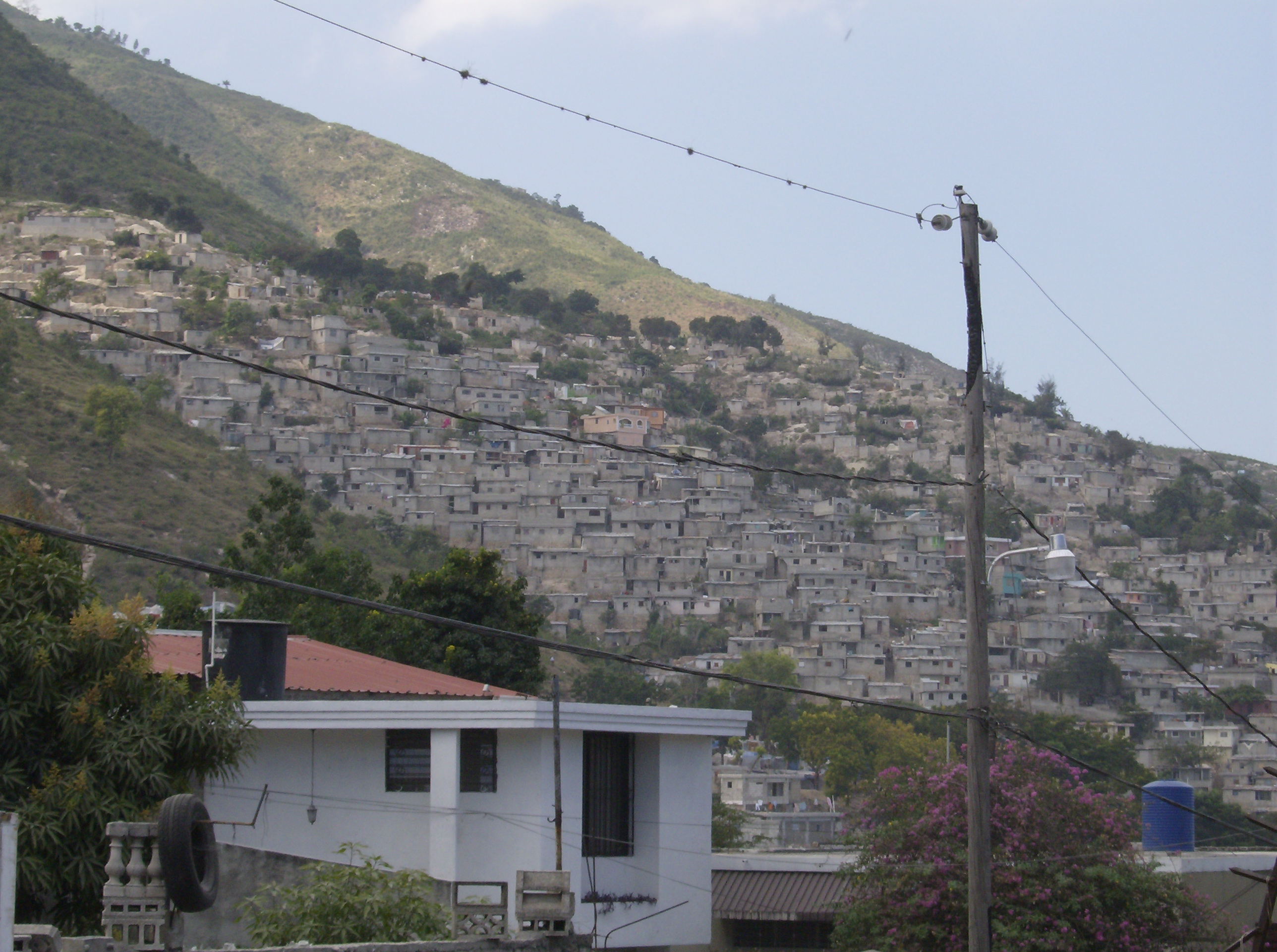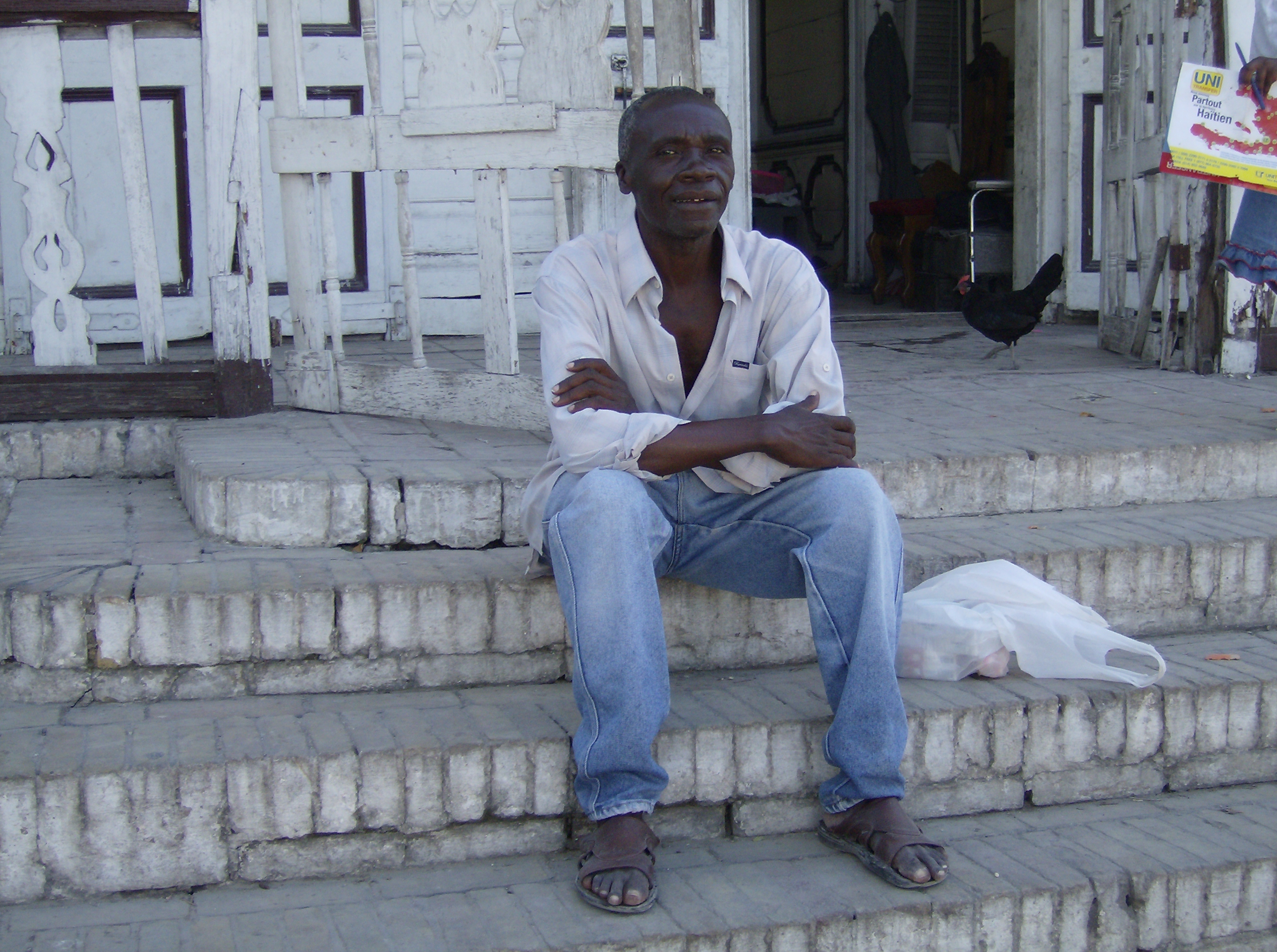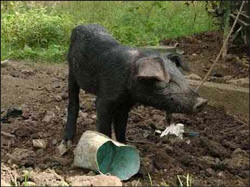Revolution #196, March 28, 2010
Reporter's Journal on the Earthquake
KATASTWÒF!—Voices from Haiti
Part 3: Conversations in Port-au-Prince
On January 12, 2010 an extremely powerful earthquake struck Haiti—devastating the capital of Port-au-Prince. This Katastwòf, as it is called in Kreyol, killed over 200,000 people. In the week after the earthquake Revolution newspaper ran important articles exposing the whole history of U.S. domination in Haiti, how this created conditions of intense poverty and lack of infrastructure—direct causes of the huge death toll. And we did extensive coverage of the whole way the U.S. was sabotaging aid deliveries and justifying this in the name of "security concerns." (See "The U.S. in Haiti: A Century of Domination and Misery" and "Why So Many People Died in the Earthquake… And Why the U.S. Can Do No Good in Haiti," Revolution #190, January 31, 2010.)
To get a deeper picture of what all this really meant for the Haitian masses and how people were looking at and dealing with the situation we sent a reporter to Haiti 12 days after the earthquake. The following is the third part in a series of pages from his journal. Go to revcom.us to read Part 1, Revolution #194, and Part 2, Revolution #195.
 |
Overcrowded housing on a hillside in Port-au-Prince. |
After two days in Pétionville I go to Port-au-Prince, the capital city where so many died in the earthquake. We drive down a long winding road called Rue John Brown, named after the heroic white abolitionist who led an armed attack on a U.S. army base shortly before the Civil War, in an attempt to initiate a slave uprising. I can't help but think how in the U.S. you almost never see a street named after John Brown—but there are countless streets, schools and monuments named after slave-owners like Washington and Jefferson.
There are dramatic cliffs and ravines off to our left. At first glance I think I am looking at the raw stone face of the mountains. But then I see these steep slopes are literally covered with little houses and shanties. Or were... many were crushed or slid off the mountain during the quake. My friend Janot tells me that not all the damage was caused by the earthquake–often these homes are washed away in a strong rain. A steep stairway leads from the road we are on down into the ravine below which is also filled with homes.
 |
Former peasant living in Port-au-Prince at the time of the earthquake. |
Over the last 25 years, people have built housing wherever they could in a desperate scramble to live in the capital. This housing was miserable and dangerous in the best of circumstances—in the earthquake many were death traps.
The impoverished and overcrowded conditions of Haiti's cities were clearly big factors in why so many people died in the earthquake. But these cities had not always been so crowded. In 1960, Port-au-Prince, the capital and by far the largest city in Haiti, had a population of only 257,000 out of 3.7 million in Haiti as a whole. Before 1970, over 80% of the people still lived in rural areas.
Yet at the time of the earthquake, 50 years later, an estimated three million of Haiti's 8-9 million people—more than one-third of the population—lived in Port-au-Prince. The new population was made up of a lot of former peasants who were mainly concentrated in the biggest slums and the worst housing. For instance, Cité Soleil, the largest slum in Haiti, was set up by Papa Doc in 1958 for manual laborers in an area close to the "Export Processing Zone" and quickly became the entry point for new arrivals to the city from the countryside searching for work. By 2000, it had grown to 300,000 people. For people like this, a friend tells me, "life was already like living in an earthquake."
Destruction in the Countryside
 |
One of the Haitian black pigs killed because of pressure from the U.S. government in 1983. |
People here are pretty steeped in Haiti's history of resistance and rebellion. Even little kids can identify revolutionary leaders pictured on the currency (like Toussaint L'Ouverture and Jean-Jacques Dessalines) and roughly explain their role in the revolution. The Haitian people waged a heroic and successful struggle against slavery and defeated the French colonialists in 1804. And I am reminded of how the French, U.S. and other capitalist powers punished Haiti because of this—politically and economically isolating the country for decades. Ever since, in these conditions, Haiti remained severely underdeveloped and poor and what developed was an oppressive sharecropping system in which the peasants became increasingly exploited by powerful forces in the countryside who had economic relations with elite classes in the cities.
This is the background to how small peasant agriculture was ruined by the workings of imperialism and policies by the U.S. and U.S.-dominated financial institutions like the International Monetary Fund (IMF) and the World Bank. This is a big factor in why so many people moved from the countryside to the cities. Revolution wrote:
"Thirty years ago most of the food eaten by the Haitian people was domestically grown. Then in 1986 the IMF loaned Haiti $24.6 million. One of the conditions of this loan was that Haiti reduce tariff protections on Haitian rice, other agricultural products and some industries. This made it possible for other countries, especially the U.S., to compete in Haiti's markets. But the Haitian farmers could not compete with U.S. rice growers who were being subsidized by the U.S. government... Before long the local rice market in Haiti collapsed and thousands of farmers were forced to move to the cities to look for work... Subordinate to the needs of U.S. imperialism, Haiti's agricultural economy was dramatically changed—and in a way that deepened the country's dependency, disarticulation and misery among the people." ("Truth Amidst the Rubble: The U.S. Is the Problem, Not the Solution," Revolution #191, February 7, 2010)
Talking to people in Port-au-Prince gives me a vivid picture of how this affected the lives of the masses.
Two brothers, Luc and Reneé, tell me how they moved from the countryside to Port-au-Prince. Luc is a very compelling figure in a quiet way. At 71, he moves carefully and speaks quietly, and with great thought. He tells me about his young years in the Gonaives area farther north from Port-au-Prince on the coast:
"Most of my family were farmers—we grew patat, bananas, corn, oats, sugar cane, coffee and a lot of rice. The soil was so good—when the rains came it helped the ground, you just threw the seed down and all kinds of things came up quickly. We had a fair amount of land, but my family did not hire people or rent land, we did all our own work..."
Luc and Reneé tell me they left the countryside to go to school and then stayed in the capital to practice their trades. Meanwhile most of their family remained farmers in the Gonaives area. But, Reneé said: "Now things are completely changed, there is no countryside, no rain, no planting in the ground." Luc added, "Things started to get worse and the cutting down of the trees was a big part of that... People had to cut down the trees for charcoal."
Gerard, who is 50, tells me he grew up around the town of Jacmel but was able to get some education, including in English. He worked in a fancy hotel in the U.S. Virgin Islands for four years, met and married an American woman in that time and fathered a daughter with her... and then was arrested for being undocumented. He spent 6 months in detention in the U.S., and then had to return to Haiti. Once back, he moved to Port-au-Prince because it was impossible to stay in touch with his wife or to arrange visits with her from the isolation of the countryside. And she had to stay in the U.S. because she had a decent job there that was sustaining all three of them—Gerard said he hadn't had steady work since returning to Haiti and mostly got by selling cigarettes on the street. Gerard said:
"After 1986 the rain came less and less. This was because of the destruction of the forests... The trees were destroyed by being burned for charcoal by the peasants, when they became more needy after the killing of the Haitian pigs in 1983. The pigs were killed because the Americans said they brought illness, so it was called ‘pest control.' The Americans pressured the Haitian government to kill them and they gave them money for each one they killed.
"[Before that] peasants would sell their pigs to pay for their children to go to school, to build a house, to buy seed and fertilizer... At this time I was 24 years old. I had a pig that was about four months old, about half a meter high and two meters in length. They offered me $3 for it. $3! I was crying, this was my starting-out-in-life pig. I wasn't a political person, but I was sad, crying, ‘why do you do that?'
"To buy a baby pig was about $150. You would give it cast-off food, burnt food, leftover grain from meal production that you mixed with water… you didn't have to pay to feed it. Our pigs were very quiet. And they were helpful, they would snuff in the dirt, break up the soil and then you could plant where they had dug, yams, banaan [plantain], patat. And they would fertilize the crops. After they took all our pigs, the Americans brought in their own pigs for us to buy. The American pigs had to have special shelters built to keep them out of the heat, you had to spend a lot of money on that, they lived better than we did.
"My father had a lot of trees and we [kids] used to plant a lot of them. But I went to see the land last year and it was naked. When you cut the trees, that causes erosion and it causes the rain to stop, and then the soil changes so that the trees can't grow. But the peasants had no choice once the pigs were gone, no other way to survive, to put their children in school. A sack of charcoal [the main cooking fuel in the cities] sells for $120. The peasants knew it was bad to cut the trees, but when they had a need they had no choice but to cut trees and sell charcoal.
"I myself used to be part of a big organization that taught us to plant trees. Every year I would plant 100 to 150 trees. My father would never cut a live tree; we waited until it was not only dead, but dried out, so there was no life to it. When someone would cut a live tree I felt like crying. I like trees, I would feed my trees like you would feed a child. I left my country in 1985 and it was covered with trees; when I came back, it was like a desert."
To be continued
If you like this article, subscribe, donate to and sustain Revolution newspaper.



